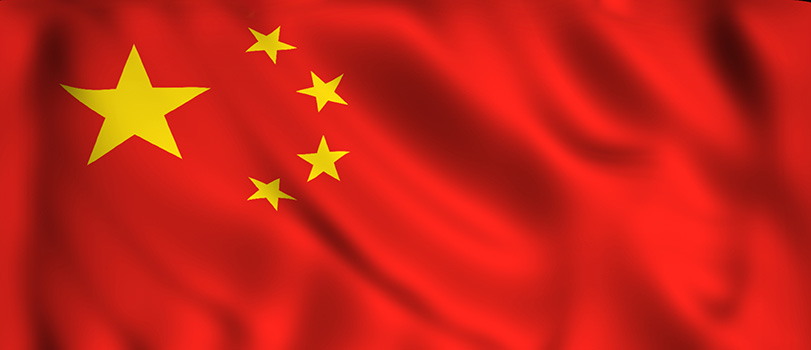©2025 Keller and Heckman, LLP
China Approves New Food-Contact Materials

On March 1, 2022, the China National Health Commission (NHC) approved 1 new food-contact material, 6 new food-contact additives, 9 food-contact materials with expanded usage, 2 new resins, and 1 new disinfectant. The substances and specifications are listed below.
New Food-Contact Materials
- Silicon dioxide coatings made from the monomers hexamethyldisiloxane and hexamethyldisilazane for use in polyethylene terephthalate (PET) coatings at a necessary use level and a specific migration limit (SML) of 0.05 mg/kg (hexamethyldisiloxane). The PET containing this substance shall be used for room temperature filling and long-term storage at room temperature (including hot filling and pasteurization under the conditions of T≤70 °C, t≤2 h or T≤100 °C, t≤15 min). It may not be used for radiation or contact with infant food or breast milk.
New Food-Contact Additives
- 2-Propenoic acid, polymer with 2,5-furandione and 2-propenamide, sodium salt (CAS No. 1630821-33-8) for use in paper and paperboard at a maximum use level of 0.041% (on dried paper basis) and specific migration limits (SMLs) of non-detect (ND) for acrylamide (DL=0.01 mg/kg), 6 mg/kg (as acrylic acid), and 30 mg/kg (as 2.5-furandione).
- 1,3,5-Triallyl-1,3,5-triazine-2,4,6 (1H,3H,5H)-trione (CAS No. 1025-15-6) for use in fluoroubber at a maximum use level of 4%. When the use temperature of fluororubber materials and products containing this substance is higher than 100 ℃, the use time may not exceed 30 minutes.
- C16-18-Fatty acids, esters with pentaerythritol (CAS No. 85116-93-4) for use in polybutylene terephthalate (PBT) at a maximum use level of 1%. PBT containing this substance shall be used for room temperature filling and long-term storage at room temperature (including hot filling and pasteurization under the conditions of T≤70 °C, t≤2 h or T≤100 °C, t≤15 min).
- Vitamin E (dl-α-Tocopherol acetate) (CAS No. 7695-91-2) for use in polypropylene (PP) and polyethylene (PE) plastics at a necessary use level.
- 1-Decene, homopolymer, hydrogenated (CAS No. 68037-01-4) for use in coating and coating layers at a use level of 1% (as painting formula) and an SML of 0.05 mg/kg (1-Decene). Coatings and coating layers containing this substance may not contact infant food or breast milk.
- Hexanedioic acid, polymer with 1,2-propanediol (CAS No. 25101-03-5) for use in coatings and coating layers at a maximum use level of 5% (as painting formula). Coatings and coating layers containing this substance may not contact infant food or breast milk.
Food-Contact Materials with Expanded Usage
- Maltodextrin (CAS No. 9050-36-6) for use in adhesives at dosage as necessary.
- C.I. pigment blue 1 (CAS No. 147-14-8) for use in polylactic acid (PLA) at a maximum use level of 0.7%. The substance should meet the requirements for colorant purity in Appendix A of GB 9685-2016.
- C.I. pigment red 254 (CAS No. 84632-65-5) for use in PLA at a maximum use level of 1.4%. The substance should meet the requirements for colorant purity in Appendix A of GB 9685-2016.
- Carbon black (CAS No. 1333-86-4) for use in PLA at a maximum use level of 1.5%. The substance should meet the requirements for colorant purity in Appendix A of GB 9685-2016.
- C.I. pigment yellow 180 (CAS No. 77804-81-0) for use in PLA at a maximum use level of 0.5%. The substance should meet the requirements for colorant purity in Appendix A of GB 9685-2016.
- Hydroxyethyl cellulose (CAS No. 9004-62-0) for use in rubber at a maximum use level of 1%.
- 2-Propenoic acid, polymer with ethenylbenzene (CAS No. 25085-34-1) for use in rubber at a maximum use level of 30%.
- 2-Propenoic acid, polymer with sodium hypophosphite, sodium salt (CAS No. 129898-01-7) for use in paper and paperboard at the necessary use level and a SML or 6 mg/kg (as acrylic acid).
- Rosin, ester with glycerol (CAS No. 8050-31-5) for use in paper and paperboard at a maximum use level of 0.25%. Paper and paperboard containing this substance may not contact with infant food or breast milk.
New Resins
- Copolymer of acrylic acid, styrene, acrylic acid ethyl ester, acrylic acid 2-ethylhexylester, methacrylic acid methyl ester (CAS No. 25585-76-6) for use in adhesives (with indirect contact with food) at a necessary use level and SMLs of 6 mg/kg (as acrylic acid), 0.05 mg/kg (acrylic acid 2-ethylhexylester), and 6 mg/kg (as methacrylic acid). Adhesives using this substance as raw materials shall be used for room temperature filling and long-term storage at room temperature (including hot filling and pasteurization under the conditions of T≤70 °C, t≤2 h or T≤100 °C, t≤15 min). It may not be used for radiation.
- Polymer of cyclohexanedimethanol-1,4, ethylene glycol, 2,2-dimethyl-1,3-propanediol, isophthalic acid, dimethyl terephthalate and trimellitic anhydride (CAS No. 74239-60-4) for use in coatings and coating layers at a maximum use level of 30% (as painting formula) and SMLs of 6 mg/kg (cyclohexanedimethanol-1,4), 30 mg/kg (ethylene glycol), 5 mg/kg (2,2-dimethyl-1,3-propanediol), 5 mg/kg (as isophthalic acid), and 5 mg/kg (as trimellitic anhydride). The use temperature of coating and coating layers produced from this substance may not exceed 130 °C and may not be used in contact with infant food or breast milk.
New Disinfectant
- Peroxyoctanoic acid (CAS No. 33734-57-5) for use on the food-contact surfaces of tools, equipment or food packaging materials that come into direct contact with food, and tableware and drinking utensils. The substance is used as an active ingredient in disinfectants. Disinfectant products containing this substance should indicate the scope of use and method of use in the label and instruction manual to ensure that the concentration of this substance in the liquid meets the following requirements: 1) When used of tools, equipment, or food packaging materials used for direct contact with food, the content of peroxyoctanoic acid may not exceed 122 mg/L and 2) When used on tableware and drinking utensils, the content of peroxyoctanoic acid may not exceed 52 mg/L.